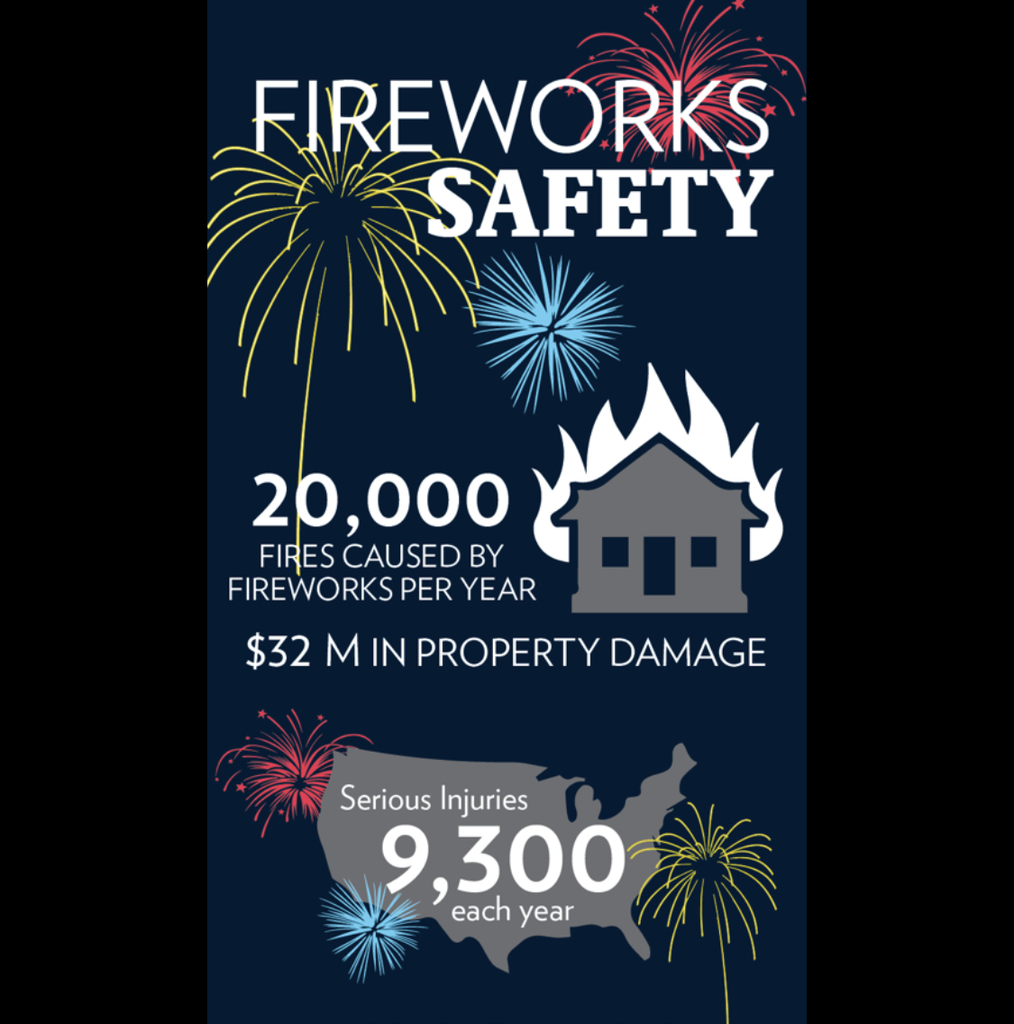
The Fourth of July is a time for friends and family to get together for barbecues, cooling off by the ocean, lake, or pool and watching your local firework displays. Unfortunately, there will always be folks who prefer to purchase their own devicesand create their own shows at home. Laws vary according to state and individual counties regarding purchasing and utilizing fireworks for individual purposes. Should you desire to purchase your own fireworks for home use, be sure to first check with your local town or municipality to ascertain what your local laws are regarding the purchase and possession of fireworks.
The best practice when it comes to firework safety is simply to leave the fireworks displays up to the professionals. Fireworks are explosives and must be treated with caution. The National Safety Council advises that the majority of fireworks accidents and/or deaths are the result of untrained individuals using professional-grade and/or homemade fireworks.
While the majority of accidents are the result of the use of professional-grade fireworks, the use of perfectly legal devices by children and young adults come in at a close second. Children and young adults should never be allowed unattended around fireworks, sparklers, bottle rockets, poppers, or any type of device which may ignite and cause burns or bodily injury.
After consulting your state and local laws, if you wish to possess and utilize your own fireworks, be sure to review any safety instructions and follow all instructions carefully and with due diligence. Never allow pets around devices. Do not discharge devices in small areas, near brush or foliage, near propane or oxygen tanks, or any other objects which may explode when exposed to heat or flame. Be sure to keep a fire extinguisher and/or water (or whatever liquid or material the device instructions indicate based on the composition of the individual device) on hand to mitigate any situations in which devices discharge early, inappropriately, or too close to flammable objects.
More information on fireworks safety can be found on the National Safety Council’s website by visiting https://www.nsc.org/home-safety/tools-resources/seasonal-safety/summer/fireworks and by contacting your local authorities to get information regarding individual applicable laws.
With the right information and by following simple, common-sense measures, your Fourth of July can be a fun, enjoyable and most of all, safe, celebration for all.
Check out this great infographic from VFIS:

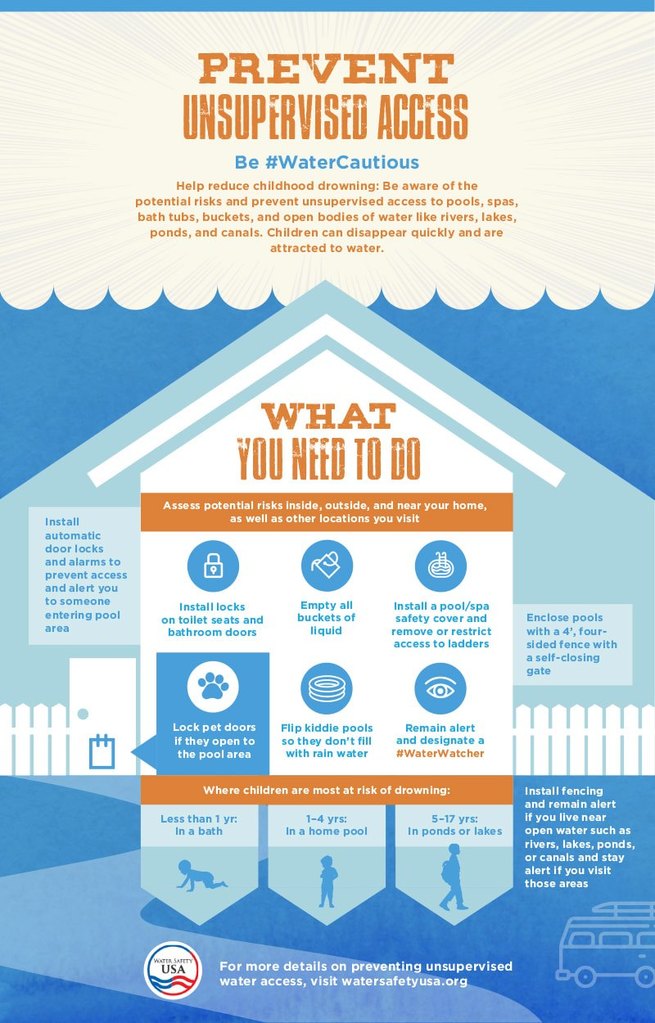
Summer has finally arrived! Warm weather and sunshine are synonymous with long afternoons spent by the pool. Whether you frequent a community pool or just have to walk out the door to your backyard, there are a few tips you should keep in mind in order to keep everyone safe and able to enjoy a break from the heat.
- Never leave children unattended near the water and if needed, designate one adult who is in charge of monitoring swimmers.
- Learn how to swim and teach your children how to swim. Our local YMCA may be able to assist you in enrolling you or your child in lessons. You can visit our East Greenbush YMCA’s website for more information.
- Practice basic water safety including walking when in the pool area, never diving into shallow water head- first, making sure long hair is secured, never swimming near drains or intake valves and never swimming whenever thunder and lightning are present.
- Learn CPR for children as well as adults. For more information on enrolling in a course near you, visit redcross.org.
- Many pool-goers like to use water wings or pool noodles to aid in floatation. These items are toys and not meant to be used as personal flotation devices. NEVER rely on these toys to keep yourself or your child safe. If you or your child cannot swim, make sure that you have a properly sized personal flotation device before entering the water. Your local sporting equipment store should have personnel on staff who can assist you in the proper sizing for PFDs.
- If you are lucky enough to own your own pool, ensure that there is fence surrounding the pool with self-closing door latches and alarms connected to them. This will prevent both children and adults from entering the area without supervision. Many towns and municipalities have strict rules which pool owners must follow in order to be in compliance with code. Make sure to check with local officials or code enforcement officer to ensure that your pool area is not only compliant, but safe and secure for your family, friends and neighbors.
Following the above simple safety tips can help you to enjoy your summer while keeping yourself, your family, friends and neighbors safe.

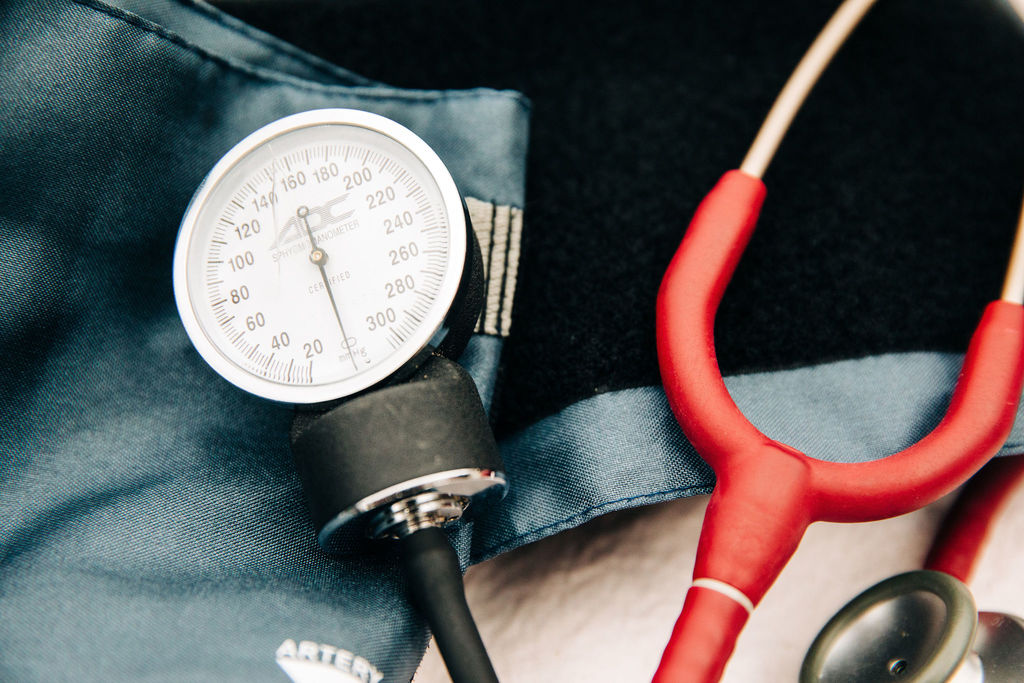
May is national stroke month and it's important to realize the link between your blood pressure and reducing the risks of a stroke. There are many benefits of taking your blood pressure regularly. If you already have high blood pressure, you can track your readings from day to day and monitor diet and exercise, both of which aid in maintaining a healthy pressure. If you do not have high blood pressure, monitoring your pressure regularly will help you detect any changes that may indicate the need to see your doctor.
It is extremely important to keep your blood pressure within normal limits. The American Heart Association defines hypertension as any blood pressure greater than 120 systolic (the top number) and 80 diastolic (the bottom number). Blood pressure is a measure of the pressure in the blood vessels caused by your heart beating and hypertension indicates that your heart is working harder than it should. Maintaining a healthy blood pressure is important to help you avoid serious health problems including heart attack and stroke. (Signs of a stroke)
There are modifiable and non-modifiable factors that can affect your blood pressure. Non-modifiable factors include genetics, which unfortunately we can’t do much to change. Modifiable factors refer to diet and exercise and learning ways to change the modifiable factors can help you to maintain a healthy blood pressure. Exercise is perhaps the most important component in maintaining a healthy blood pressure. The Department of Health and Human Services suggests that at least 150 minutes of moderate aerobic activity or 75 minutes of vigorous aerobic activity per week can be beneficial to health and wellness. This means that you should aim for at least 30 minutes of aerobic activity each day of the week. Exercise like a 30-minute brisk walk every day can have a positive effect on your heart health and overall wellness. Many people feel that they just don’t have the time to achieve the 30-minute goal, but there are many ways that you can sneak physical activity into your daily routine, such as:
- shorter bursts of activity throughout the day
- breaking up a workout into three 10-minute sessions
- taking a short, brisk walk each hour
Finding an activity that you like to do such as walking with friends, or taking a bike ride can make exercising more enjoyable and therefore making you more likely do it. Something as simple as a regular brisk walking can achieve the same benefits as other forms of exercise. The greater the duration, length and intensity of walking, the more benefit. So, remember, to reduce your risk for heart attack and stroke, talk with your Doctor and:
- Monitor your blood pressure regularly
- Exercise with 30 minutes of aerobic activity each day
- Know your modifiable and non-modifiable factors

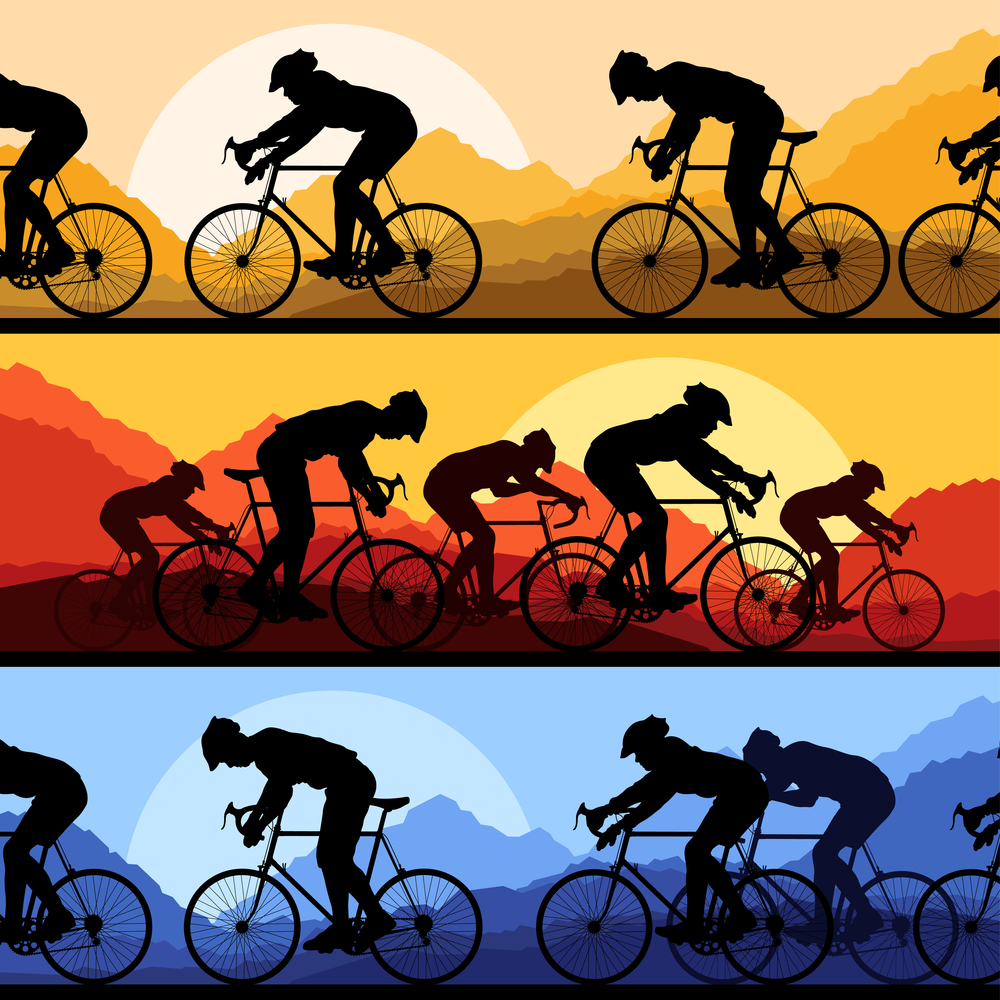
Spring has sprung!
And that means it’s time to hit the road…
Whether you’re a runner, a cyclist, or both, as you’re lacing up your sneakers to go for a run or hit the road on your bicycle, remember some important safety tips that can keep you out of harm’s way and allow you to enjoy your outdoor activities.
If you’re heading out for an early morning (or twilight) run, a few tips to keep in mind:
- Don’t wear headphones! Headphones can interfere with your awareness of your surroundings and can prevent you from recognizing potential safety hazards;
- Run against traffic – it allows you to see on-coming traffic and can give you ample time to move out of the way if a motorist does not see you;
- Look both ways before crossing the road;
- Carry identification on your person in the event of an emergency;
- Carry a cell phone whenever possible;
- Run with a friend or your dog;
- Tell someone the route you are planning to take;
- Avoid unpopulated areas and areas that you are unfamiliar with; and
- Wear reflective material so that vehicles can see you as they approach.
For those who prefer cycling, some rules to keep you safe:
- Learn traffic laws – cyclists must follow the same rules as motorists;
- Ride single-file in the direction of traffic and be vigilant for hazards;
- Use hand signals when turning or maneuvering through intersections;
- When approaching intersections, stop and look both ways as well as over your shoulder;
- Wear bright clothing during the day and reflective material at night so motorists can easily identify you;
- Equip your bicycle with reflectors on the front and rear as well as the pedals and spokes; and last but not least,
- Wear a helmet!!!
Whatever activity you choose this spring, use common-sense, take safety measures and be cautious to ensure that you stay safe in your pursuit of health and wellness.
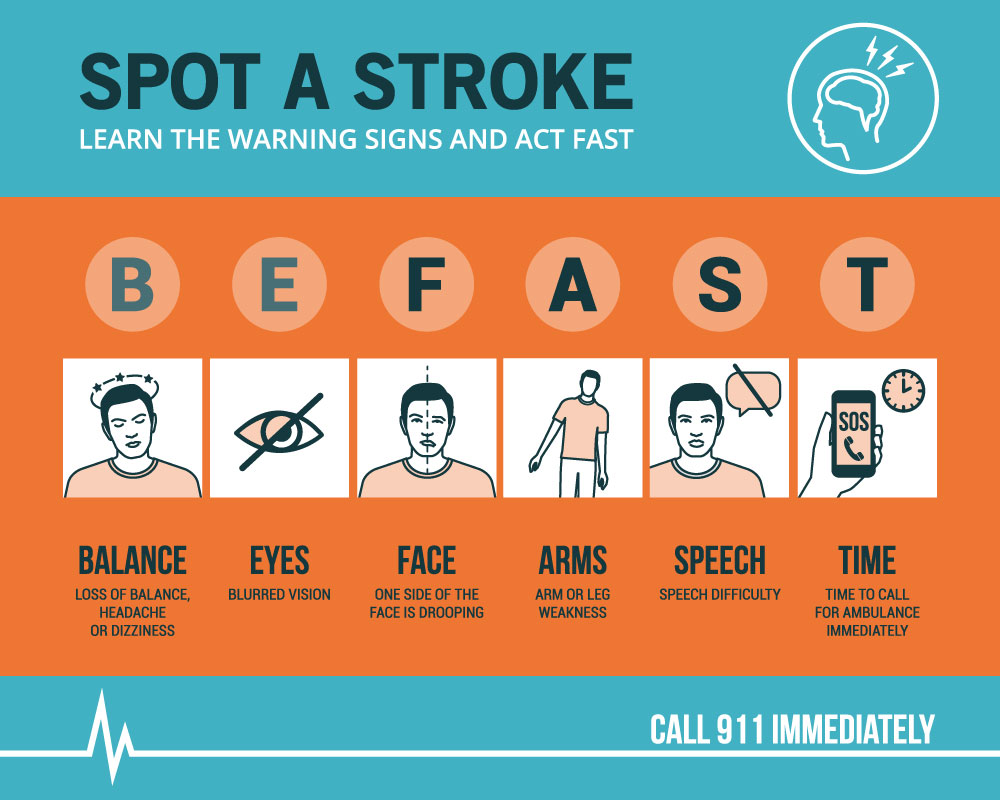
Every year, more than 795,000 people in the United States have a stroke, that's once every 40 seconds! Stroke is the #2 cause of death in the United States and the leading cause of disability.

Read the Books - info poster, brochure cover template layout with flat design icons, other infographic elements and filler text
Learn to B.E. F.A.S.T.
You can help spot the signs of a stroke. Remember, time is brain! The sooner you can recognize that something is wrong and call 911, the better chance of survival is. Science is making great strides, however there's a limited window for treatment with certain clot-busting drugs.

Reduce your risk factors...
High blood pressure, high cholesterol, smoking, obesity, and diabetes are all leading causes of stroke. 1 in 3 adults have at least one of these preventable risk factors that are linked to causing stroke and heart disease. Sedentary lifestyles can also increase the risks.
Have you heard the phrase, "Sitting is the new smoking?" For adults, the Surgeon General recommends 150 minutes of moderate-intensity physical activity, such as a brisk walk, each week. Learn more about healthy living with these resources.

Having a Heart Healthy Holiday
During winter months, negative or close to zero temperatures can lead to health risks including worsening of possible cardiovascular risks. The cold weather places additional stress on the body such as increasing heart rate to manage strong temperature fluctuations, specifically preventing the body from cooling. These strong temperature fluctuations are unfavorable for hearth health.
Things to keep in mind:
- Avoid going outside without dressing properly, since the cold can trigger the aforementioned symptoms. It is important to choose appropriate clothing for both the climate and the activities.
- Wear waterproof boots.
- If at all possible, stay home on days of extreme cold or wind.
- Despite common misconceptions, alcohol does not increase body temperature.
- A little known fact is that the nicotine contained in tobacco facilitates cardiac spasms.
- Vaccinate against the flu.
- Follow a proper diet, regardless of whether a pathology such as hypertension or diabetes is currently present and even if cardiovascular disease is not present.
Cardiovascular disease has many contributing factors and if you have multiple risk factors it can enhance the detrimental effects on the body when compared to only having one risk factor. Good nutrition can reduce the risk of cardiovascular disease by reducing as many risk factors as possible. Lifestyle changes in nutrition choices have a very significant impact on reducing cardiovascular risk factors.
Tips for taking care of your heart in winter
- Cover well, paying special attention to the extremities and the head (especially bald men who have an increased risk of heart attack) to avoid vasoconstrictor phenomena.
- Avoid intense efforts without first warming up.
- In winter, the least physical activity requires a major effort to the heart, so walking in the cold would be equivalent to running 100 meters.
- Limit activities in the event of peak pollution associated with very low temperatures: micro particles and Nitric Oxide increase the risk of infarction.
- Pay attention to the slightest symptom including a feeling of tightness in the chest, palpitation, shortness of breath or chest pain on exertion and vertigo. If you feel uncomfortable, consult without delay.
The most vulnerable people
Those most vulnerable are those who suffer from a cardio-cerebrovascular pathology such as arterial hypertension , heart failure, a history of myocardial infarction, stroke, angina pectoris, revascularization coronary or arterial (stent, bypass), or heart valve disease. Those who suffer from heart rhythm disorders are also at higher risk. People over the age of 70 must be supervised because after a certain age, the body’s ability to adapt to temperature variations decreases. This applies to both negative temperatures and day-to-day temperature variations. You should also know that the wind increases the feeling of cold and its harmful effects on health.
We recommend consulting with your primary care physician or cardiologist at the onset of any symptom or sensation that someone with known cardiovascular disease may perceive as out of the ordinary.
When in doubt, call 911 – That’s what we’re here for.
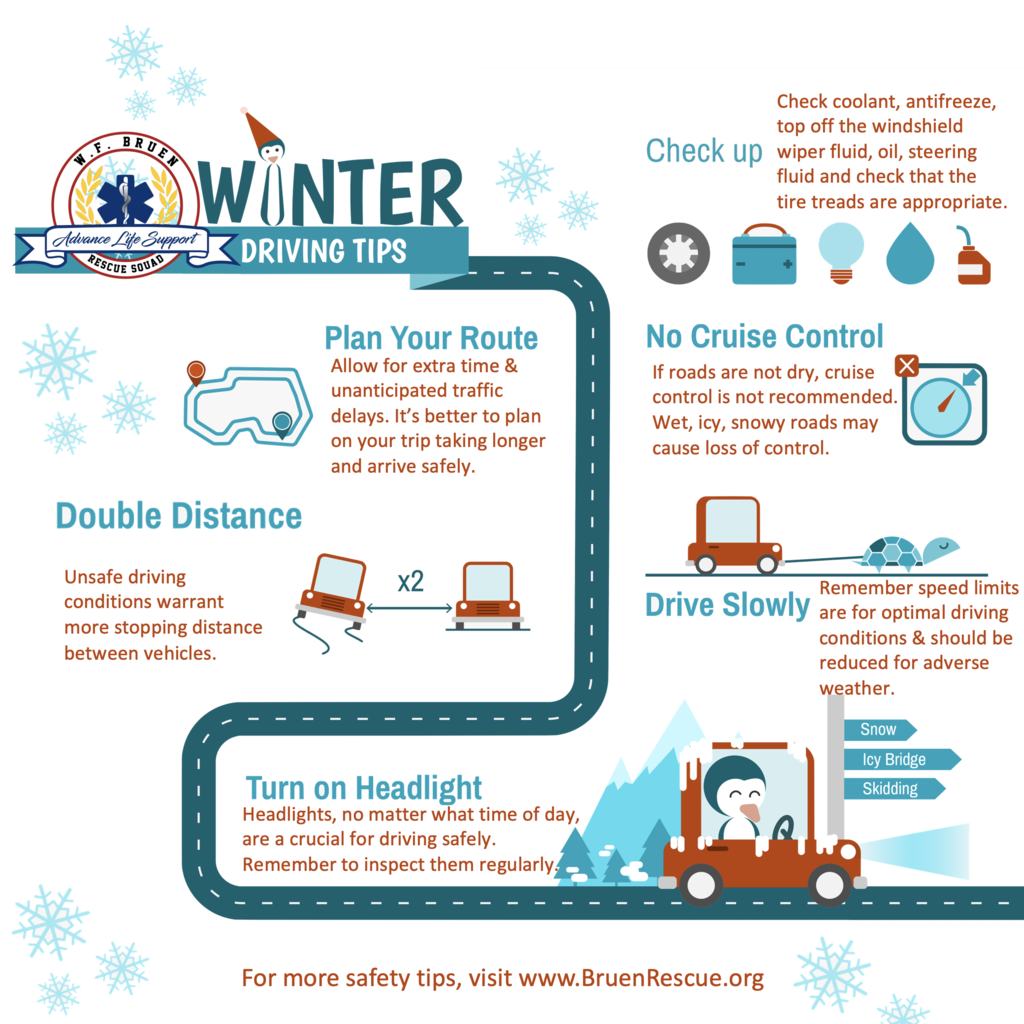
Winter driving can be challenging, especially for new drivers or those not familiar with our lovely Northeast winters. Around 30% of hospitalizations and injuries from accidents and injuries occur due to adverse winter driving conditions, rain and fog.
It is essential that during the winter season we have the vehicle ready for any unforeseen event that may occur. The following are essential tips for driving safely this winter:
- Extra time: Allow for extra travel time and unanticipated traffic delays. It’s better to plan on your trip taking longer and arriving safely.
- Inspect the vehicle: Before embarking on a trip be sure that your car is in the right condition to travel, consider the potential for unexpected storms. Check the coolant, antifreeze, top off the windshield wiper fluid, oil, steering fluid and check that the tire treads are appropriate. Consider a set of all seasons or winter tires for the heavy snow. Proper tires offer a stable and optimum pattern for grip on poorly adherent surfaces.
- Use of the safety belt: It’s the law and it makes good common sense for all passengers to be belted while the vehicle is moving; Rear seat passengers are not exempt from injury.
- Driving smoothly: Adapt the speed of the vehicle to the weather conditions. To operate safely, make sure to avoid sudden changes in direction or swerving. Making gentle turns will decrease the odds of losing control of your vehicle. If it is necessary to make a sharp or fast steering wheel turn, the will vehicle start to understeer, and you should always correct the direction by making harmonic movements from one side to the other until the vehicle stops, steering INTO the skid.
- Maintain safety distance: It is important to drive with a proper driving safety distance and increase that distance during adverse weather conditions, since the time it takes to stop the vehicle on snow or ice is much greater than when it is dry. Remember speed limits are for optimal driving conditions and should be reduced for adverse weather.
- Equipment: We recommend keeping the following in your vehicle in case of emergencies: a flashlight, warm blankets, reflective vest, spare change of clothing and a scraper or brush to remove snow and ice. Remember, snow must be removed from the car before driving otherwise it becomes a hazard to others.
- Other recommendations: Check the condition of the roads before the trip, keep your tank at least half full and when parking, leave the windshield wipers raised to make it easier for snow removal and lessen the likelihood of freezing them to your windshield.
Driving according to the type of adverse weather
- With snow and ice: It is likely that in the winter season the snow and ice are abundant, so it is advisable to move slowly. We must take special care with brakes, since they do not usually work properly on icy roads. Drive with great caution, increase your following distance between vehicles and drive slowly.
- With wind: When the wind blows excessively strong, we must slow down the vehicle and firmly hold the steering wheel, especially if you are passing a large vehicle.














